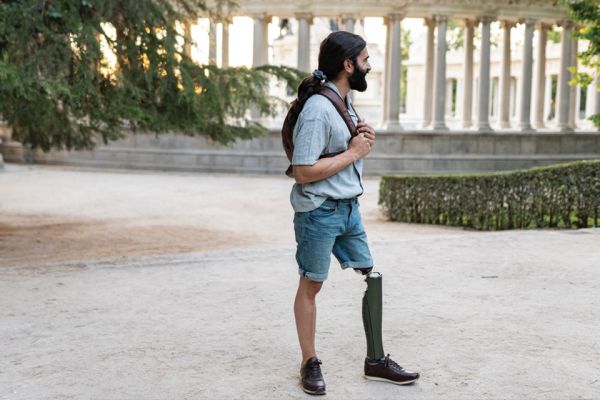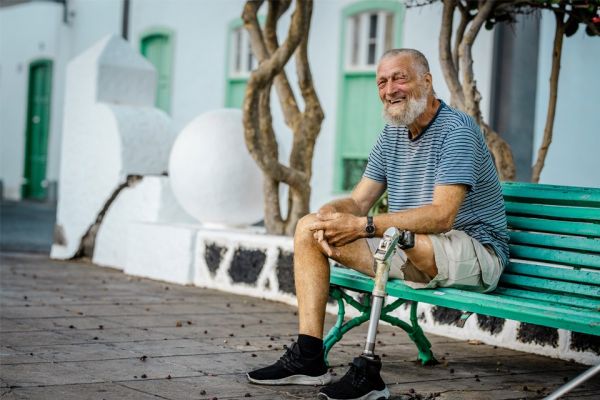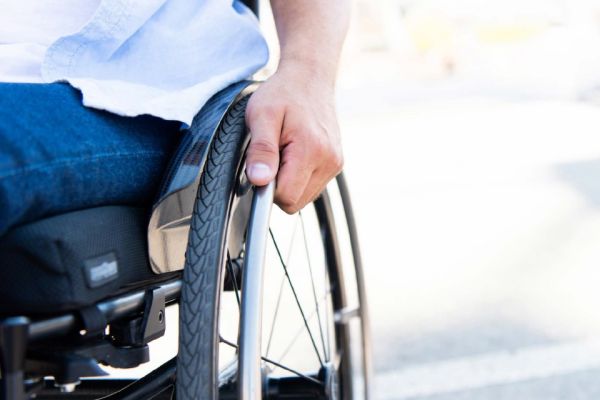Amputee Coach on Call
Author: Lynn DeCola

Let me begin by telling you how very excited I am about the opportunity that I’ve been offered to regularly contribute to thrive magazine as an Amputee Coach. I’m often asked what I do, so I want to share a little bit here.
I’m an above-knee amputee with over 30 years of personal and professional experience in orthotics, prosthetics, and amputee care.
After my amputation, I completed a work hardening program in hopes of returning to my position as a package delivery driver. Unfortunately, I lost my job due to my amputation and was unable to return to that career.
It was during that difficult time that my prosthetist introduced me to the field of orthotics and prosthetics, and that opened a whole new path for me. Over the years, I’ve had the privilege of working with amputees in their homes, rehabilitation centres, doctors’ offices and hospitals, giving me a well-rounded understanding of the challenges amputees face in everyday life.
I am a Certified Prosthetist Orthotist (CPO), Technician, Mental Health First Aider, and Amputee Coach. Today, I focus on helping amputees across North America through in-person and virtual appointments, as well as Zoom sessions, offering education, guidance, and peer support. I also have extensive experience in working with wound care professionals and in designing offloading devices to help reduce the risk of amputations and revision surgeries.
This background enables me to quickly identify potential problems and offer solutions or guidance as individuals work with their own care team, whether they are managing life after amputation or aiming to prevent further procedures.
After my amputation, I completed a work hardening program in hopes of returning to my position as a package delivery driver. Unfortunately, I lost my job due to my amputation and was unable to return to that career.
It was during that difficult time that my prosthetist introduced me to the field of orthotics and prosthetics, and that opened a whole new path for me. Over the years, I’ve had the privilege of working with amputees in their homes, rehabilitation centres, doctors’ offices and hospitals, giving me a well-rounded understanding of the challenges amputees face in everyday life.
I am a Certified Prosthetist Orthotist (CPO), Technician, Mental Health First Aider, and Amputee Coach. Today, I focus on helping amputees across North America through in-person and virtual appointments, as well as Zoom sessions, offering education, guidance, and peer support. I also have extensive experience in working with wound care professionals and in designing offloading devices to help reduce the risk of amputations and revision surgeries.
This background enables me to quickly identify potential problems and offer solutions or guidance as individuals work with their own care team, whether they are managing life after amputation or aiming to prevent further procedures.
I no longer design, fabricate, or adjust orthotic or prosthetic devices. That work belongs to your healthcare professionals. They provide clinical care.
Orthotists and prosthetists are highly skilled professionals, some of whom work within business settings, and like any business, services can vary for many reasons. As an amputee coach, I provide independent support to amputees.
My role is to help amputees better understand the process, learn to identify challenges (whether limb-related or prosthesis-related), and offer tools and encouragement as they work with their own prosthetist, physical therapist, and broader healthcare team.
I also lead free, twice-weekly, live and interactive Zoom meetings through Amputees Preparing Amputees 4 Life (APA4L), a welcoming space where amputees can share experiences and learn from one another. There is no sponsorship which allows for truly open conversation and support. Just real conversations and support from amputees with lived experience, preparing amputees for life.
I encourage amputees to avoid comparing themselves to other amputees. Every amputee’s journey is different, and my goal is to help each person find confidence, comfort, and a better quality of life, whether they choose to wear a prosthesis or not.
I also lead free, twice-weekly, live and interactive Zoom meetings through Amputees Preparing Amputees 4 Life (APA4L), a welcoming space where amputees can share experiences and learn from one another. There is no sponsorship which allows for truly open conversation and support. Just real conversations and support from amputees with lived experience, preparing amputees for life.
I encourage amputees to avoid comparing themselves to other amputees. Every amputee’s journey is different, and my goal is to help each person find confidence, comfort, and a better quality of life, whether they choose to wear a prosthesis or not.
So, for my first installment, I’m sharing my answer to a very common question… “How can you tell if you truly can’t wear a lower limb prosthesis OR if it’s a prosthetic problem that could be addressed?”
It’s not always easy to figure out. Sometimes people are told that their unique residual limb anatomy is the reason why they can’t wear their prosthesis. But in reality, problems with the fit, suspension, alignment, or even footwear can prevent a prosthesis from being wearable or functional.
Here are some things to consider:
Residual Limb Anatomy: Shape, length, skin, bone, soft tissue and contractures play a role, but many of these factors can be accommodated with proper socket design, suspension systems, and alignment.
Fit and Suspension: If the socket doesn’t fit properly or stay on securely, it can be difficult and sometimes impossible to wear.
Alignment: If the alignment of the prosthesis is off, it can cause pain, instability and fatigue, making it feel like “I just can’t wear this leg.”
Footwear: An improper supportive or protective shoe (or none at all) can throw off your gait, cause discomfort, or affect the alignment of the entire prosthesis. Here’s the key point. Before concluding that your limb shape makes it impossible to wear a prosthesis, it’s worth exploring whether these other factors can be improved upon. Many times, the right design, adjustments, or team approach can make the difference.
If you or someone you care about is facing amputation or prosthetic challenges, I invite you to join Amputees Preparing Amputees 4 Life for guidance and support, or reach out to me directly at Improving Quality of Life after Amputation for affordable coaching. Learn more about Lynn DeCola by visiting Life Long Prosthetics.
Here are some things to consider:
Residual Limb Anatomy: Shape, length, skin, bone, soft tissue and contractures play a role, but many of these factors can be accommodated with proper socket design, suspension systems, and alignment.
Fit and Suspension: If the socket doesn’t fit properly or stay on securely, it can be difficult and sometimes impossible to wear.
Alignment: If the alignment of the prosthesis is off, it can cause pain, instability and fatigue, making it feel like “I just can’t wear this leg.”
Footwear: An improper supportive or protective shoe (or none at all) can throw off your gait, cause discomfort, or affect the alignment of the entire prosthesis. Here’s the key point. Before concluding that your limb shape makes it impossible to wear a prosthesis, it’s worth exploring whether these other factors can be improved upon. Many times, the right design, adjustments, or team approach can make the difference.
If you or someone you care about is facing amputation or prosthetic challenges, I invite you to join Amputees Preparing Amputees 4 Life for guidance and support, or reach out to me directly at Improving Quality of Life after Amputation for affordable coaching. Learn more about Lynn DeCola by visiting Life Long Prosthetics.











 How to resolve AdBlock issue?
How to resolve AdBlock issue?